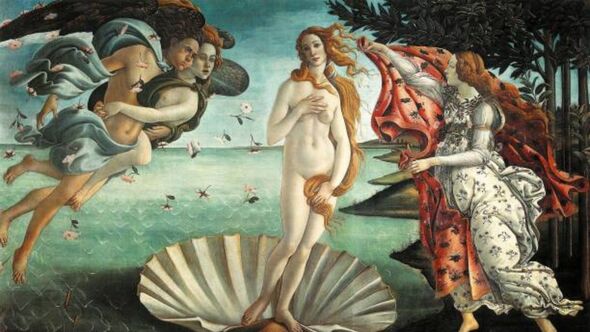The Birth of Venus, a painting by the Italian artist Botticelli, depicts the goddess Venus at the shore after her birth.

The mystery behind one of the world’s most famous paintings has finally been “solved” after 500 years.
The Birth of Venus is a painting by the Italian artist Botticelli, likely done in the mid-1480s. It depicts the goddess Venus at the shore after her birth.
X (formerly Twitter) user Culture Critic (@Culture_Crit) has claimed to know exactly what is happening in the painting, doing away with any historical mystery.
They note that the title of the piece is “wrong”. Venus, the Roman goddess of love, beauty, fertility and victory, is not actually being born – she is coming ashore.
Venus shares her origin myth with Greek goddess Aphrodite. She came to be when the Titan Cronus castrated his father Uranus and threw his genitals into the sea.
READ MORE BBC Antiques Roadshow guest struggles to compose herself over huge valuation
Everyone knows Botticelli’s Birth of Venus — one of the most iconic paintings of all time.
But what exactly is going on here? Scholars have wrestled with its meaning (and mystery) for 500 years.
And it isn’t what you think… (thread) ?????? pic.twitter.com/0Lc66S3aFW
— Culture Critic (@Culture_Crit) October 23, 2024
Riding on a sea shell from the sea foam came Venus in adult form. She landed on the shores of Cyprus. From her birth came the first roses.
She is blown to shore by the god of the west wind, Zephyrus, and received by the Hora of Spring, who clothes her.
Culture Critic said the Birth of Venus is different from Botticelli’s other work, saying he approached Christian scenes with realism due to his belief they were true history.
But the Birth of Venus is not attempting reality, the user said. It is two-dimensional and stylised with figures arranged neatly and Venus appearing almost like a statue.
DON’T MISS
The ‘seriously beautiful’ but underrated European town an hour from Paris [LATEST]
‘Worst’ paint colour to avoid that makes rooms feel ‘unpleasant’ [REPORT]
Antiques Roadshow guest screeches as he’s taken back by rare painting’s value [INSIGHT]
Trending
SUBSCRIBE Invalid email
We use your sign-up to provide content in ways you’ve consented to and to improve our understanding of you. This may include adverts from us and 3rd parties based on our understanding. You can unsubscribe at any time. Read our Privacy Policy
Culture Critic said that, despite Venus’ nudity in the painting, the piece is not meant to evoke sexuality but something far more deitific.
Venus appears almost floating in an impossible position on the seashell, representing the very essence of beauty. She is also covering herself to appear modest and vulnerable.
The user said that in Botticelli’s day, Neoplatonism was rising: the belief that beauty is a reflection of the divine, and contemplating it elevates one’s soul to divinity.
Culture Critic finished by comparing it to depictions of Jesus’ baptism, with both being born from the water. They said the painting bridged the gap between classical myth and Christian belief.
Sourse: www.express.co.uk





